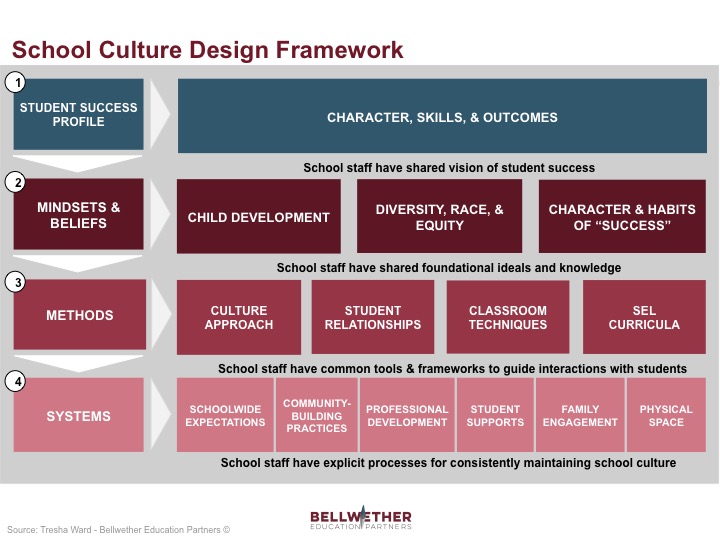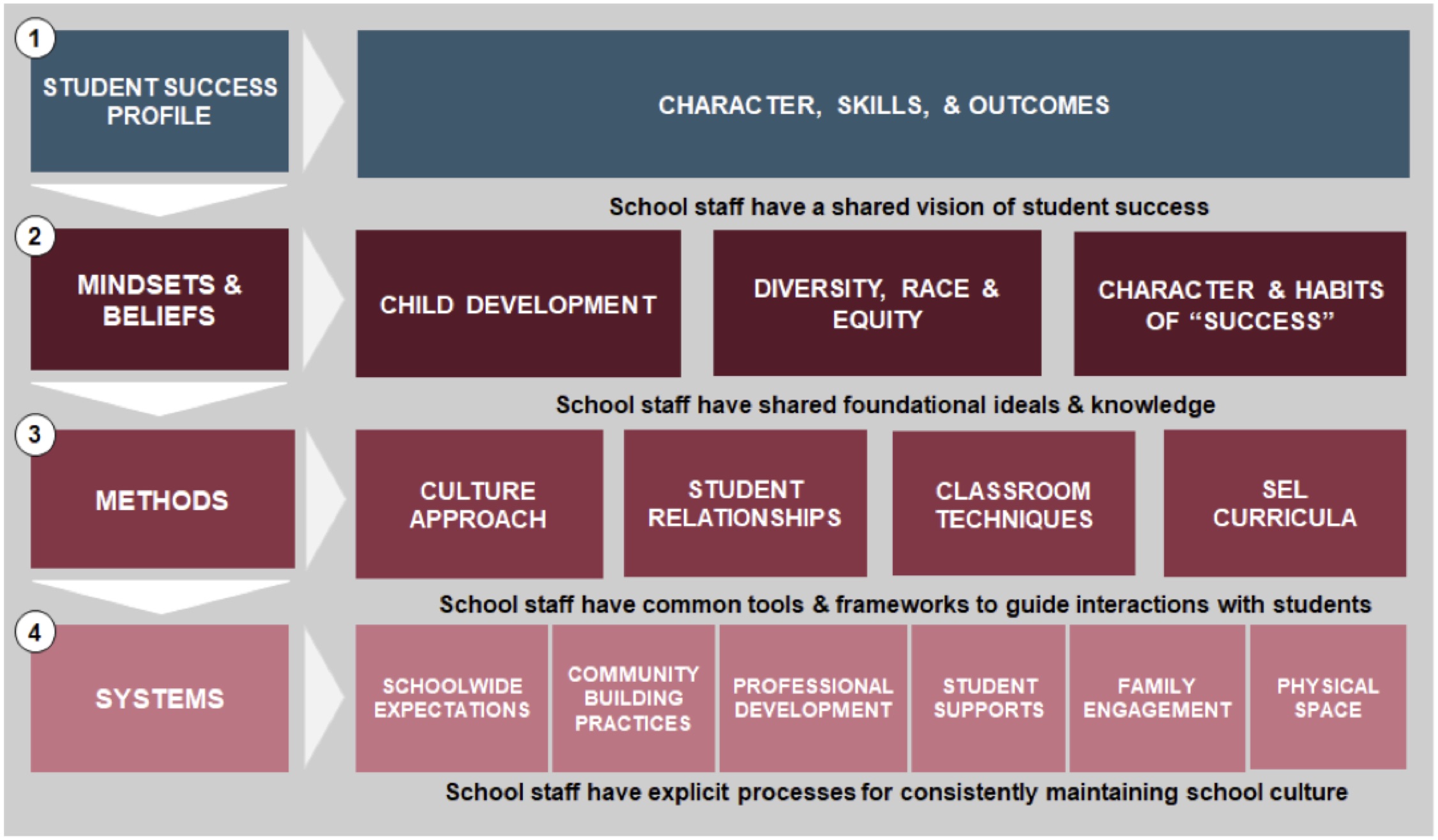Culture can make or break a school’s success. It can propel academics forward or drag learning down into an unrecoverable spiral where kids lose precious time and teachers quickly burn out.
When I started my career as a teacher through the time I became a school leader, I pulled ideas about school culture and classroom management from a number of educators and resources. My inspirations included Lisa Delpit and Gloria Ladson-Billings, and books like Yardsticks, Power of our Words, Teaching with Love and Logic, and Teach Like a Champion. I also relied heavily on the experiences of my own upbringing as a black, West Indian woman in the 80’s and 90’s in New York City, with teachers and parents who let me know I was cared for but also “did not play” (in other words, they were strict). My guiding belief became, and remains, an unwavering faith in the limitless potential of each child, and the approach that followed was fueled by a lot of love, usually the tough kind.
My approach wasn’t foolproof. But this fundamental mindset was what I looked for in teachers that I hired. As a school team, we refined our approach to culture over time and adjusted the systems and practices that supported it. Building the culture of our school was a process we had to figure out through trial and error, which led to lost instructional time, frustrated teammates, or broken relationships with students when we didn’t get it right.
Unfortunately, too many principals don’t learn how to build the kind of school culture where teachers feel successful and capable of teaching for many years and where students — especially students of color — thrive. Many of the existing resources on the topic tend to reduce advice down to ambiguous ideas, a few fragmented strategies, or case studies about charismatic leaders. They never demystify the elements necessary for a healthy culture or offer clear guidance on how to implement them.
School culture can be a touchy subject, particularly when leaders and teachers have different philosophies, approaches, and beliefs. While I have my own point of view on these topics, I unequivocally believe that consistency and alignment are the most important features of an effective school culture. A cohesive school culture isn’t built through a patchwork of random techniques, curricula, or professional development sessions. Instead, school culture is comprised of a thoughtfully defined cascade of four elements, described below in further detail:

- The student success profile outlines a school’s vision of the student who will graduate from their school. This should outline the key character traits (e.g., courage), skills (e.g., problem solving), and outcomes (e.g., proficient in another language) that students will gain and achieve through a school’s program and serves as the “north star” for all decisions.
- The school’s guiding mindsets and beliefs are the shared foundational views and knowledge related to child development for the students and ages served. This includes diversity, race, and equity issues that will shape the school community (e.g., a belief that the school should actively work to undo systems of oppression) and the character and habits of success that will be reinforced through the school program (e.g., developing habits of goal setting and self reflection).
- Mindsets and beliefs should inform the methods a school ultimately chooses to build their culture. Methods include the school’s classroom management philosophy (e.g., restorative practices, no excuses, etc.); a clear stance on the role of relationship building with students; aligned techniques (e.g., engagement, management, and/or de-escalation); and approach to social-emotional skills development.
- Supporting systems operationalize a school’s culture and make it take hold in the school. These systems include shared school-wide expectations and procedures, especially for common spaces such as cafeterias, hallways, etc. These also include community building practices, such as school-wide celebrations. Systems should also include plans to build staff capacity through professional development, ensure adequate student support through a clear Response to Intervention (RTI) process, and a thoughtful approach to engaging families. Finally, systems should include guidelines to create a warm and welcoming physical environment for the school community.
The organizing framework above is agnostic of any one approach or philosophy, and can be used by network and school leaders to build or evaluate the cohesiveness of their school’s culture. These four elements, like puzzle pieces, are all essential to building a comprehensive approach to school culture and should be thoughtfully planned for.
As with much of the work we do at Bellwether, our approach is informed by key questions rather than a set recipe for how to do things. In a follow-up post to this one, I will share some of the key questions aligned to each element that I ask school and network leaders to assess their school’s strength.
